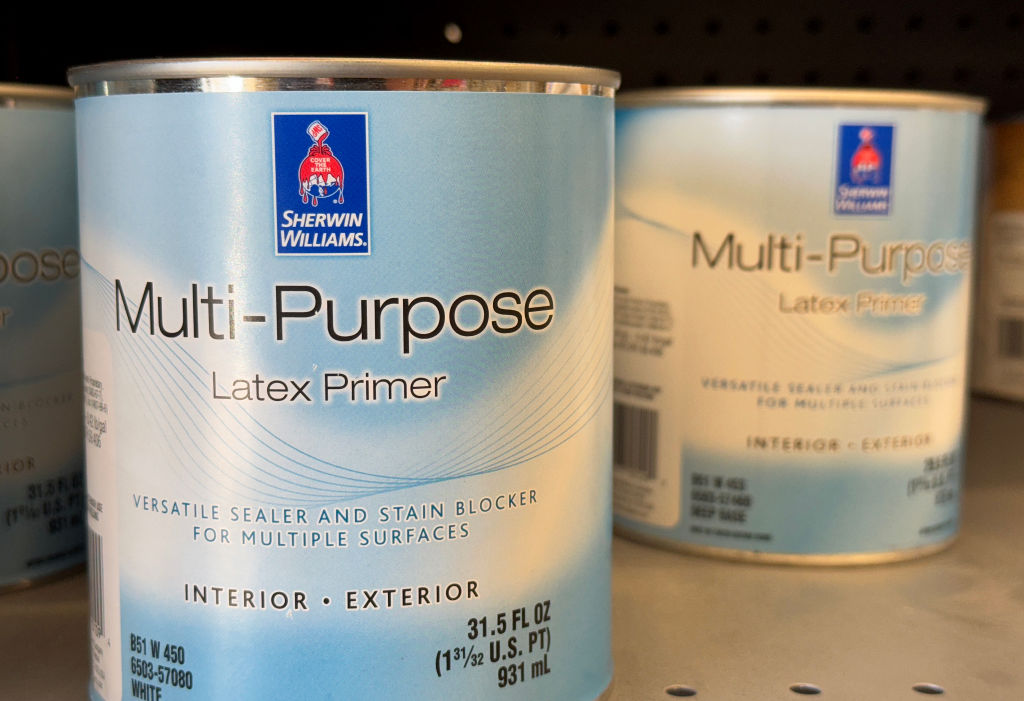Sherwin-Williams Is a Sleeper of the 100,000% Return Club
Sherwin-Williams has quietly carved out a massive return for shareholders over the years.


Editor's note: This is part four of a 13-part series about companies whose shares have amassed 100,000% returns for investors and the path taken to generate such impressive gains over the long term. See below for links to the other stocks in this series.
One interesting aspect of the 100,000% club are the sleepers. Sherwin-Williams (SHW) is a case in point. Who knew? But the company's business is one that when you stop to think about it, you realize there is paint on almost everything. Paint is everywhere and Sherwin-Williams sells a lot of it.
The company was founded in 1866 and over the course of nearly 160 years has penetrated every distribution channel there is: there are Sherwin-Williams stores for consumers, more stores for contractors, the company sells through big box stores, mom-and-pop hardware stores, chain hardware stores and through building supply warehouses and, of course, online.

Sign up for Kiplinger’s Free E-Newsletters
Profit and prosper with the best of expert advice on investing, taxes, retirement, personal finance and more - straight to your e-mail.
Profit and prosper with the best of expert advice - straight to your e-mail.
But what Sherwin-Williams has done very well is acquire other paint companies. It may be safe to say, and it's certainly arguable that growth through mergers and acquisitions has hurt more companies than it has helped. Witness Sprint, which acquired Nextel where integration issues and cultural clashes ultimately did in the company and it ultimately ran into the waiting arms of T-Mobile in 2020.
Hewlett-Packard, once the standard bearer of Silicon Valley, made missteps with Compaq (acquired for $25 billion in 2001), Palm (acquired for $1.2 billion in 2010) and Autonomy (acquired for $11.7 billion in 2010), which presaged the splitting of the company into two entities.
But not Sherwin-Williams. The company's foray into M&A started in 1872 when it acquired warehouses from Standard Oil. But since 2007, Sherwin-Williams has acquired 10 companies and, in the process, has assembled some of the best-known brands in the United States as well as in select overseas markets. These brands include Valspar, Minwax, Dutch Boy, Krylon and Thompson's Water Seal.
Since as far back as 2004, at least, Sherwin-Williams has never reported a loss. Quite the opposite, the company has grown revenues at approximately 7% annually and earnings per share at nearly 13%, almost double the growth in revenues.
How is Sherwin-Williams able to grow earnings almost twice as quickly as revenues? First, Sherwin-Williams has continued to squeeze costs. While the spread between what it takes to manufacture paint and its selling price, or the gross margin, has been fairly constant over the decades, Sherwin-Williams has been able to squeeze operating costs a little more each year and, in the process has raised their operating margin by nearly 60%.
While squeezing pennies out of its operating costs, Sherwin-Williams has also consistently bought back its own shares. In 2004, the company had 422 million shares outstanding. By midway through 2024, the share count was 252 million, a 40% reduction. The net effect of this decline is a constant upward movement in the earnings per share and a constant upward bias in the stock price, which is partly demonstrated by its 122,000% return since 1980.
But growth in share price is only one part of the return that shareholders reap. The other part of the total return are dividends. The dividend yield for Sherwin-Williams is modest, currently less than 1%. But it's a dividend grower, increasing its payout at an average annual rate of 13.4%.
Investors who bought 100 shares of SHW at the beginning of 2004 for an investment of $1,125 would now have 300 shares based on an April 2021 three-for-one stock split. With the cash payment for 2024 indicated at $2.86, that original $1,125 investment would be throwing off $860 ($2.86 x 300 shares) for a cash-on-cash yield of a stunning 87%. And that is likely to keep growing. Oh, and those shares purchased in 2004 for $1,125? They are now worth about $107,000.
Sherwin-Williams' dividend cash flow is not only strong, it's safe too and that adds to the price investors are willing to pay for SHW shares. Specifically, Sherwin-Williams dividend payout ratio, which is the amount of total earnings that get allocated to the dividend, has been steady at about 25%. By many yardsticks, this is low and that means even if earnings falter, even if they falter for a few years, the dividend is unlikely to be at risk.
Also laudable is a return on shareholder equity north of north of 70% which means the earnings not paid in dividends earn a good return when management reinvests them in the business. Combine all this, with modest debt levels means there will always be buyers for SHW, and given the performance, few sellers, driving a 120,000% return since 1980.
Note: This content first appeared in Louis Navellier's latest book, The Sacred Truths of Investing: Finding Growth Stocks that Will Make You Rich, which was published by John Wiley & Sons, Inc.
Related content
Get Kiplinger Today newsletter — free
Profit and prosper with the best of Kiplinger's advice on investing, taxes, retirement, personal finance and much more. Delivered daily. Enter your email in the box and click Sign Me Up.

-
 Tax Day 2025: Don’t Miss These Freebies, Food Deals and Discounts
Tax Day 2025: Don’t Miss These Freebies, Food Deals and DiscountsTax Day You can score some sweet deals on April 15 in some select restaurants like Burger King, Shake Shack, and more.
By Gabriella Cruz-Martínez
-
 Registered Social Security Analyst: The Retirement Professional You Didn’t Know You Needed
Registered Social Security Analyst: The Retirement Professional You Didn’t Know You NeededThe services of a Registered Social Security Analyst (RSSA) are often overlooked. Yet, for those planning for retirement, nearing or already retired, an RSSA can be an invaluable resource.
By Donna LeValley
-
 Should You Hire a Public Adjuster for Your Insurance Claim?
Should You Hire a Public Adjuster for Your Insurance Claim?As natural disasters strike more often, insurance clients are asking, 'What should I do, or who should I hire, if my insurance company is jerking me around?'
By H. Dennis Beaver, Esq.
-
 Tips to Help Entrepreneurs Create Self-Sustaining Businesses
Tips to Help Entrepreneurs Create Self-Sustaining BusinessesWith the right processes and people in place, a truly sustainable business can be efficiently passed on to a successor and run profitably on its own.
By Jason L Smith, CEP®, BPC
-
 Navigating Annuity Taxation: A Guide for Financial Advisers
Navigating Annuity Taxation: A Guide for Financial AdvisersUnderstanding the essentials of taxation in retirement income strategies involving annuities helps ensure positive outcomes for clients.
By Jake Klima
-
 How Google Reviews Can Help (or Hurt) Financial Advisers
How Google Reviews Can Help (or Hurt) Financial AdvisersDon't leave your Google Business Profile unclaimed — someone else can make changes if they claim it. Also, here's what you can (and cannot) do with the reviews.
By Jeff Briskin
-
 Stock Market Today: Stocks Gain on Tech, Auto Tariff Talk
Stock Market Today: Stocks Gain on Tech, Auto Tariff TalkThe Trump administration said late Friday that it will temporarily halt tariffs on some Chinese tech imports.
By Karee Venema
-
 What Is the Buffett Indicator?
What Is the Buffett Indicator?"It is better to be roughly right than precisely wrong," writes Carveth Read in "Logic: Deductive and Inductive." That's the premise of the Buffett Indicator.
By Charles Lewis Sizemore, CFA
-
 10 Major AI Companies You Should Know
10 Major AI Companies You Should KnowThese 10 AI companies are at the forefront of machine learning. Find out how they’re driving innovation and jostling to be the biggest players in the game.
By Tom Taulli
-
 How Baby Boomers and Gen Xers Are Redefining Retirement Living
How Baby Boomers and Gen Xers Are Redefining Retirement LivingBoth generations need to embrace change and leverage real estate as a dynamic asset in their retirement planning. Here's how financial advisers can help, too.
By David Conti, CPRC